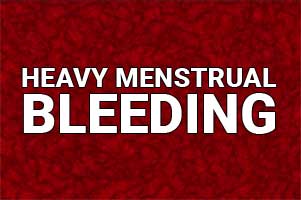- Home
- Editorial
- News
- Practice Guidelines
- Anesthesiology Guidelines
- Cancer Guidelines
- Cardiac Sciences Guidelines
- Critical Care Guidelines
- Dentistry Guidelines
- Dermatology Guidelines
- Diabetes and Endo Guidelines
- Diagnostics Guidelines
- ENT Guidelines
- Featured Practice Guidelines
- Gastroenterology Guidelines
- Geriatrics Guidelines
- Medicine Guidelines
- Nephrology Guidelines
- Neurosciences Guidelines
- Obs and Gynae Guidelines
- Ophthalmology Guidelines
- Orthopaedics Guidelines
- Paediatrics Guidelines
- Psychiatry Guidelines
- Pulmonology Guidelines
- Radiology Guidelines
- Surgery Guidelines
- Urology Guidelines
Heavy menstrual bleeding linked to high prevalence of bleeding disorders

Heavy menstrual bleeding is a common gynaecological complaint among adolescents.Dr Brooke O’Brien from the Queensland Paediatric and Adolescent Gynaecology (PAG) Service at the Children’s Health Queensland Hospital and Health Service, Brisbane, Australia, and colleagues conducted a Study to evaluate the association of Bleeding disorders and heavy menstrual bleeding (HMB).The researchers found that Bleeding disorders including Von Willebrand disease (VWD), platelet function disorder (PFD), thrombocytopenia, and clotting factor deficiencies, were more prevalent among adolescent girls with heavy menstrual bleeding (HMB). The study was presented at RCOG World Congress 2018.
“HMB is a common gynaecological complaint among adolescents … A significant proportion of adolescent girls with HMB referred to a PAG clinic will have a bleeding disorder, and the prevalence in this study is consistent with the literature,” O’Brien noted.
“It is important to identify bleeding disorders in the adolescent female population because the obstetric and gynaecologic morbidity goes beyond troublesome heavy periods … [as] they are at increased risk of surgical and obstetric haemorrhage,” according to study lead author Dr Brooke O’Brien from the Queensland Paediatric and Adolescent Gynaecology (PAG) Service at the Children’s Health Queensland Hospital and Health Service, Brisbane, Australia.
The researchers retrospectively analysed 124 adolescents with HMB (average age 14 years and 3 months), of whom 62.1 percent (n=77) were screened for bleeding disorder and 86.3 percent (n=107) underwent an iron deficiency and/or anaemia screening. [RCOG 2018, abstract KO6055]
Overall, a 35 percent prevalence of bleeding disorder was observed in patients with HMB, and treated with hormonal therapies (n=96 percent), tranexamic acid (n=87 percent), iron therapy (n=70 percent), and combined oral contraceptive pill (n=61 percent).
Among HMB patients with bleeding disorder, results showed that VWD was the most common type of bleeding disorder, mainly type 1 VWD at 30 percent and low VWD at 22 percent, followed by other inherited platelet disorder at 19 percent, dense body deficiency at 15 percent, thrombocytopenia at 11 percent, and factor deficiency at 3 percent.
Of the 49.5 percent (n=53) patients diagnosed with iron deficiency and/or anaemia, a 70 percent higher incidence of bleeding disorder was noted. Two of the patients with the bleeding disorder had a blood transfusion due to HMB-related episodes.
O’Brien recommended that “severe bleeding episodes may benefit from directed therapies, such as desmopressin or clotting factor concentrates, and these agents may be valuable in perioperative prophylaxis and treatment of surgical and obstetric haemorrhage,” but highlighted that these should be prescribed under the supervision of the treating haematologist depending on the condition.
Therefore there is an urgent need for close collaboration between gynaecologists and haematologists in a specialized tertiary centre for early recognition of bleeding disorders in the adolescent and management of patients HMB and bleeding disorders.

Disclaimer: This site is primarily intended for healthcare professionals. Any content/information on this website does not replace the advice of medical and/or health professionals and should not be construed as medical/diagnostic advice/endorsement or prescription. Use of this site is subject to our terms of use, privacy policy, advertisement policy. © 2020 Minerva Medical Treatment Pvt Ltd